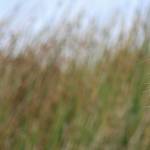Pasture Forage for Horses: Carbohydrate Content of Grass

Horse owners often seed paddocks and pastures with perennial cool-season grasses. Because these grasses accumulate sugars and fructans, they are typically high in nonstructural carbohydrates (NSC), potentially making them unsuitable for horses struggling with metabolic issues, such as insulin dysregulation or laminitis.
As awareness of metabolic dysfunction in horses swells, owners of affected horses seek management strategies to reduce carbohydrate intake. Warm-season grasses do not produce fructans and contain relatively low levels of NSC, so interest in them as pasture grasses has soared.
Researchers at Rutgers University set out to evaluate the nutrient composition and daytime changes in soluble carbohydrates of two warm-season grasses compared to a mixture of cool-season grasses.*
They chose cold-tolerant Bermudagrass and improved crabgrass as the warm-season grasses to trial. The cool-season grass mix consisted of orchardgrass, tall fescue, and Kentucky bluegrass. All grasses were planted in specific plots. Once plants reached the boot stage of maturity, samples were collected by hand-clipping from each plot at four-hour intervals over three days. During the boot stage, the seed head swells but remains enclosed in the flag leaf. Researchers packaged and sent samples to an independent laboratory for nutrient analysis.
As expected, at similar stages of maturity, Bermudagrass and crabgrass had lower NSC than the cool-season grass mix, making it an attractive alternative for horses sensitive to NSC content in pasture. Forage NSC for all grasses was lowest in the early morning hours and greatest in the afternoon and evening, but was most distinct in the cool-season grass mix.
In sum, the researchers indicated that “these results support recommendations to utilize warm-season grasses or restrict grazing to early morning to limit NSC consumption.”
Like pasture grasses, hays can also have variable NSC levels. Hays made from warm-season grasses will generally be lower in NSC than those made from cool-season grasses, but only hay analysis can provide definitive values.
Horses that consume diets composed largely or entirely of forage should be fed a vitamin and mineral supplement to ensure all nutrient requirements are met. Choose a high-quality supplement from a reputable manufacturer.
*Weinert-Nelson, J.R., W.A. Meyer, and C.A. Williams. 2022. Diurnal variation in forage nutrient composition of mixed cool-season grass, crabgrass, and Bermudagrass pastures. Journal of Equine Veterinary Science 110:103836.








